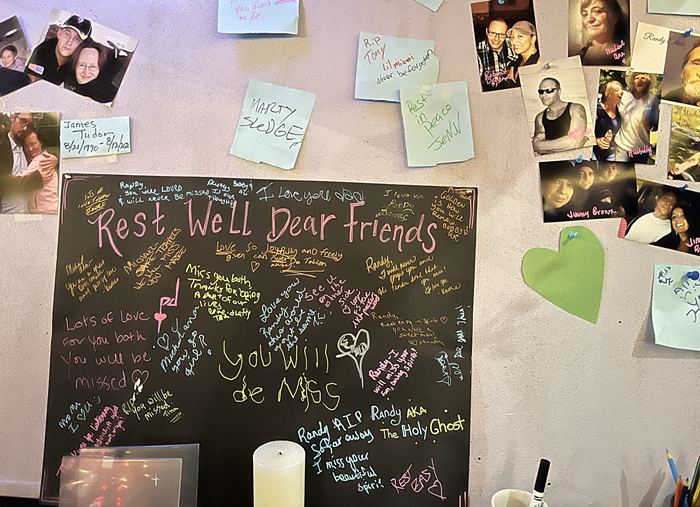In the few years since the Los Angeles-born painter Kehinde Wiley received his MFA from Yale, he has pursued a narrowly focused and inimitable style. Fusing the worlds of baroque art and contemporary hiphop culture, Wiley's oil paintings subversively insert young black men into an art historical tradition from which they are otherwise absent. So in the portrait, "St. Michael," for instance, a twentysomething black man stares out at the viewer, wearing a Charlotte Hornets jersey, a camouflage jacket, and a bandana wrapped around his head. Behind him, an ornate and flowery pattern fans out in a dimensionless background. It's a bizarre juxtaposition between a centuries-old style of representation and an ultra-modern subject.
Wiley goes to great lengths to capture specific details about his subjects and, in particular, their clothes, so that they are unmistakably anchored in the time in which they were painted. The young man in "Design for a Stained Glass Window with Wild Man" wears a reissued pair of pastel-hued, retro Nike sneakers, while the man in "St. Lucy" sports a G-Unit T-shirt. Unsurprisingly, this collision of aesthetics has landed Wiley critical attention in both the art world—solo shows at Deitch Projects and the Brooklyn Museum—and lucrative gigs in the commercial world. In 2006, he was commissioned by Nike to create billboards in Los Angeles and, the previous year, he painted portraits of the honorees at VH1's Hiphop Honors Awards.
Certainly, Wiley is appropriating an artistic tradition that is categorically "white." And, in doing so, presents young black men as immortal or deified in sainthood. But, by painting his subjects in a manner reserved for aristocrats of the time, he reveals certain links—conspicuous materialism, the flaunting of wealth as power—that connect baroque art with urban culture. Suddenly, the braggadocio and machismo emanating from the young man in "Entry into Paris of the Dauphin, Future Charles V" appears closer to self-possessed confidence than a postured gangster sneer. Even the decorative designs that surround his subjects conjure contemporary signifiers of wealth, from the crests and emblems of designer brands to the pattern on a Louis Vuitton handbag. That these themes resonate in both worlds raises Wiley's work above masterful painting into the realm of incisive concept art.












